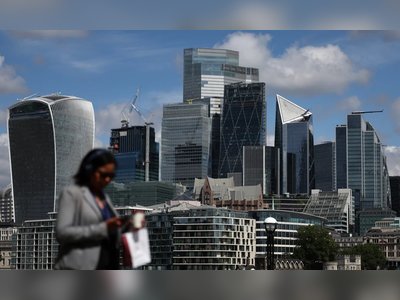Coronavirus: no easy way out of pandemic, even with a vaccine, experts say
The future remains foggy as the coronavirus pandemic charges into the second half of the year, with more than 1 million new infections reported in the past week. But one thing is clear, experts say: there is no easy way out.
Infectious disease experts can only theorise about what trajectory the virus will take in the coming months and whether it will embed itself permanently in the population and circulate every year.
But they generally agree that the future will depend on how governments use strategies and tools, and how people adapt their daily lives.
Tedros Adhanom Ghebreyesus, director general of the World Health Organisation, said on Monday that things would only get “worse and worse and worse” if countries and people did not take the necessary steps to stop the spread of Covid-19.
There was no way for the world to return to the “old normal” for the foreseeable future, he said.
A new reality
Daniel Lucey, an adjunct professor of infectious diseases at Georgetown University Medical Centre in Washington, agreed.
“We need to realise that this is truly an unprecedented virus for which there is no appropriate historical analogy,” he said.
“Unless it’s gone, it will continue to flare up given the opportunities humans present to the virus – not wearing masks, not social distancing – so yes this is our world reality now.”
Several places that appeared to have had the contagion under control saw case numbers spike after social distancing measures were eased.
Hong Kong went three weeks without a locally transmitted case, but since July 5 has recorded more than 200, with the origins of dozens of them unclear.
Australia’s second-largest city Melbourne last week reimposed a shutdown of all but essential activities, after its case numbers spiked, and stringent controls were temporarily ordered again in Beijing last month after an outbreak linked to a local market ended a 55-day streak of no local cases there.
Two factors that can drive these sudden increases are the spread of the disease by asymptomatic and mild cases, and the potential for superspreading events, according to Sanjaya Senanayake, a specialist in infectious diseases and associate professor at the Australian National University medical school in Canberra.
Spikes in case numbers would lead to the reimposition of stricter control measures like working from home, and potentially closing schools and businesses to ensure the situation did not “spiral out of control”, he said.
With a vaccine unlikely to be ready before the middle of next year, the public should be prepared to deal with these measures “at any time if there’s an outbreak”, he said.
“[Such measures] will be put in place early, hopefully, when there’s an outbreak, and then be lifted … but it’s all very unsettling and uncertain,” Senanayake said, adding that overseas travel would also be limited for many people during this time.
Don’t count on a vaccine
While vaccines are seen as a way to control the crisis, they should not be the basis for long-term measures, according to David Heymann, a professor of infectious disease epidemiology at the London School of Hygiene and Tropical Medicine.
“We all hope that there will be a vaccine, but it should not stop what we are trying to do today – and what are we trying to do today? Are we trying to suppress the virus and minimise the number of deaths and continue to suppress it indefinitely if there isn’t a vaccine? Or are we trying to let it enter into our society in a way that we can shield the people at greatest risk and if it is destined to become endemic, let it become endemic?”
Working out the right long-term strategy would depend on how the virus behaved, as different emerging diseases had different pathways, said Heymann, who chairs the WHO’s technical advisory group for infectious hazards.
Most countries have looked to suppress the spread of the virus using control measures to keep death tolls low and protect hospitals from being overwhelmed – a method advocated by the WHO.
“No matter where a country is in its epidemic curve, it is never too late to take decisive action,” Tedros said this week, after a record 230,000 people were confirmed as being infected on a single day.
Most of them were in the Americas, which, led by recent surges in the United States and Brazil, is the pandemic’s present epicentre. But the virus is also taking hold in India – the world’s second-most populous country – and South Africa.
“Too many countries are headed in the wrong direction,” Tedros said, calling for physical distancing and hygiene measures. Some parts of hard-hit countries the United States and India that had lifted restrictions are now reversing course.
No perfect strategy
Lucey said that while lockdowns had been effective in stopping significant disease spread, there was “no perfect, easy answer” to controlling the pandemic due to the high financial and psychological toll of such measures.
“It’s a matter of doing the best that’s possible in order to markedly decrease transmission,” he said, adding that in the US there may be ongoing “high-tide wave and low-tide waves” of infection.
But he said he was hopeful that the development of better technologies like drugs and rapid, point-of-care testing, paired with measures like social distancing, contact tracing and mask-wearing could help to safely restore some facets of normal life in the near term.
Senanayake said there were still questions as to how long people who had had the disease retained immunity to it.
“If there isn’t long-term immunity, [in the absence of a vaccine] it could just become a vicious cycle of ongoing infection,” he said.
Ashley St John, an assistant professor and immunologist at Duke-NUS Medical School in Singapore, said that while there was more to be learned about immunity to the disease, in the long term, having vaccines to help minimise transmission would be “essential for getting back to normal”.
But it was important to be realistic about their impact, as early vaccines were not likely to “completely prevent any infection in anyone”, she said.
Instead they could be used alongside other control measures to reduce transmission, especially for at-risk people, while further research looks to extend their longevity or efficacy.
“The best vaccines give us protection for a lifetime, and so falling short of that might seem like a failure,” she said. “But we need something at this stage.”













